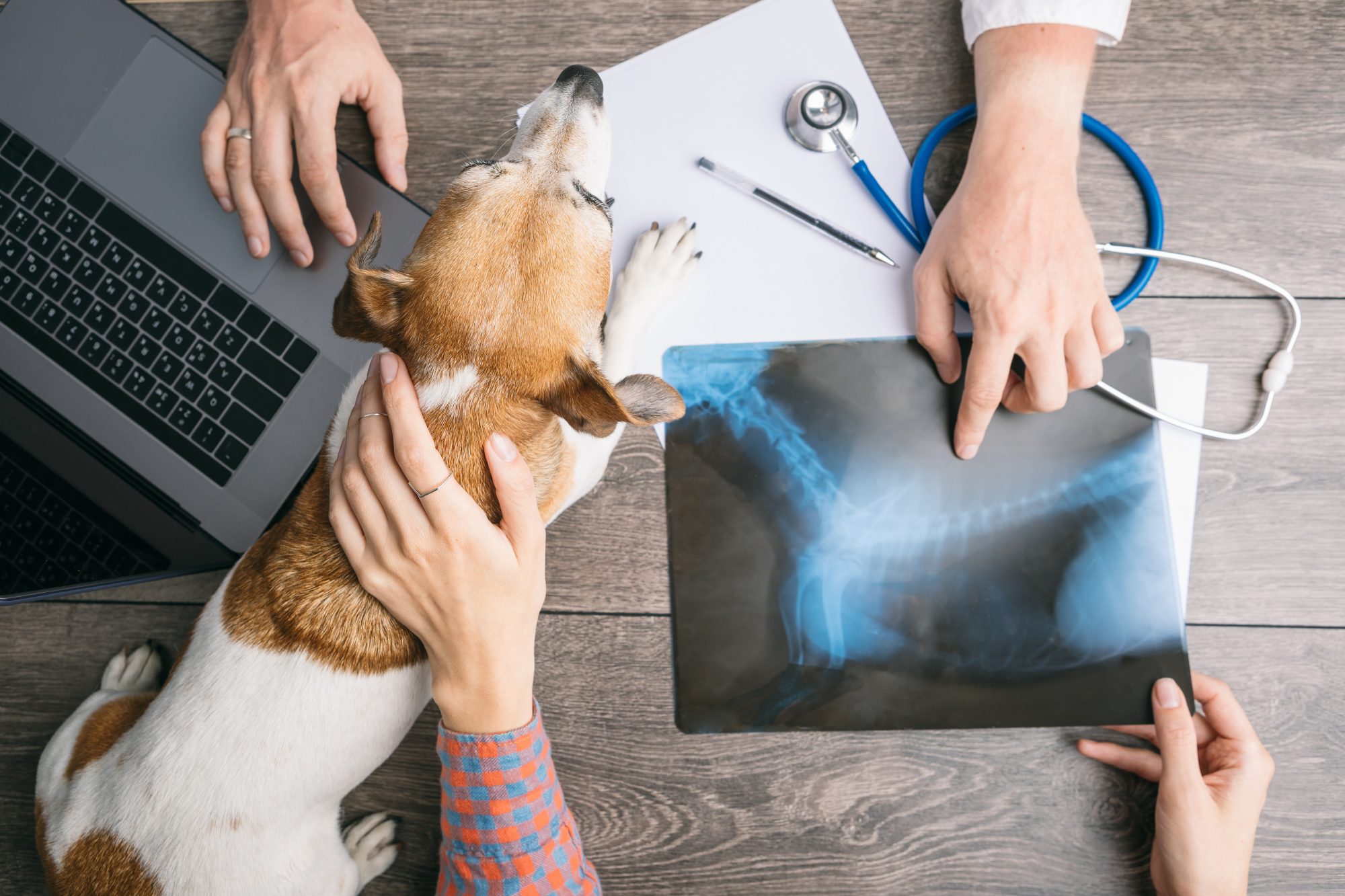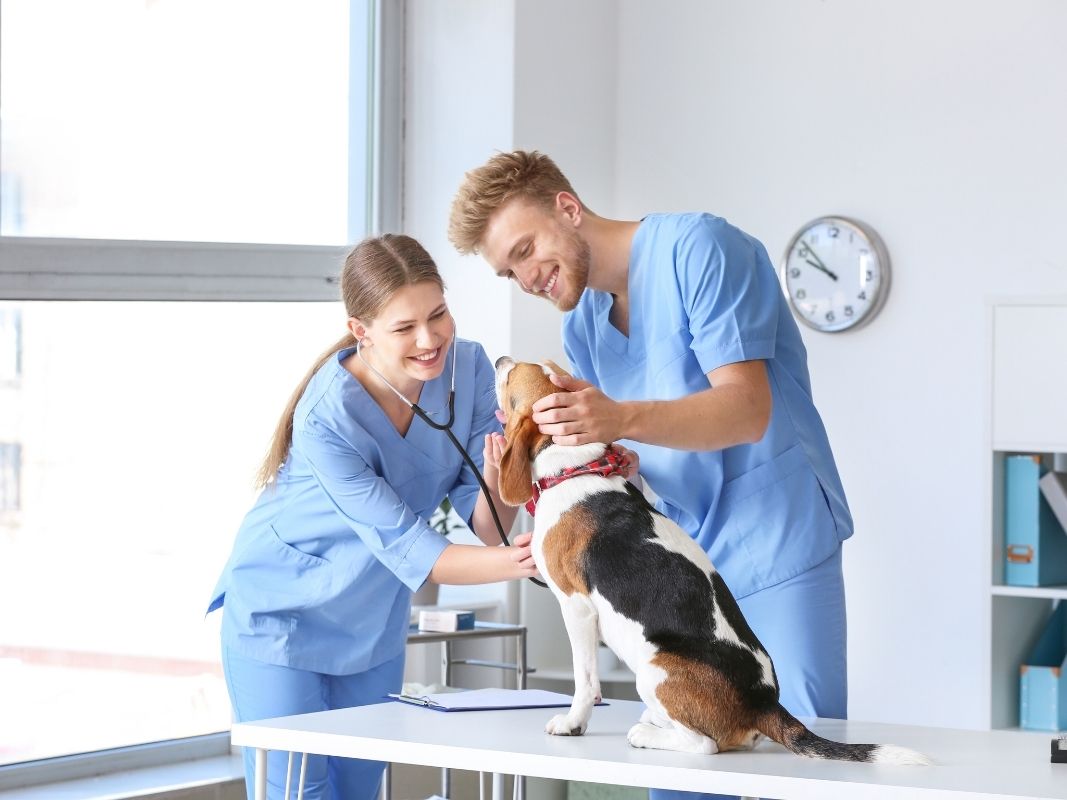Why Pet Rehabilitation Is Critical: the Perks of Vet Solutions for Your Pet dog's Recuperation
Animal rehab is a necessary part of recuperation for pet dogs encountering injuries or disabilities. Vet solutions provide critical assistance with customized recovery plans that address specific demands. These plans frequently include pain administration, physical therapy, and nutritional guidance. Understanding the various elements of pet rehabilitation can illuminate its value in improving healing end results. What specific advantages do these solutions provide, and exactly how can they transform a pet's healing journey?
Comprehending Animal Rehab
Pet recovery encompasses a variety of restorative practices focused on restoring the health and performance of injured or handicapped pets. This field incorporates various techniques, including physical treatment, hydrotherapy, and work therapy, tailored to fulfill the particular demands of each pet. Rehabilitation specialists evaluate an animal's problem, developing customized treatment plans that might involve exercises to reinforce muscle mass, boost movement, and improve total well-being. The process not just focuses on physical recuperation but also addresses psychological and behavior facets. Animals frequently experience anxiety and anxiousness following an injury, making psychological wellness considerations crucial in rehab. By creating an encouraging atmosphere, specialists can help animals restore their confidence and adapt to their brand-new situations. Via routine sessions, pets can experience significant improvements, ultimately resulting in a much better top quality of life. Generally, recognizing animal rehab highlights its significance in promoting healing and improving the bond in between pets and their owners.
The Function of Discomfort Monitoring in Recovery
How important is reliable discomfort monitoring in the healing of hurt animals? It plays an essential role in helping with healing and improving the general wellness of family pets. Appropriate discomfort monitoring not only minimizes discomfort yet likewise advertises wheelchair, making it possible for animals to take part in rehab tasks necessary for healing. When discomfort is properly handled, animals tend to react favorably to treatment, bring about quicker recovery outcomes.Veterinarians make use of various techniques to analyze and attend to discomfort, consisting of drugs, acupuncture, and alternate treatments. By tailoring pain monitoring techniques to the specific requirements of each pet, vets can ensure that animals continue to be calm and participating throughout their healing trip. Minimizing pain assists reduce stress, which can hinder recovery and prolong recuperation times. To summarize, efficient discomfort management is necessary for enhancing the healing procedure and improving the quality of life for injured animals.
Physical Therapy Strategies for Animals
Numerous physical therapy strategies are available to help in the rehab of pet dogs recovering from injuries or surgeries (tplo surgery for dogs). These methods can boost mobility, alleviate pain, and advertise recovery. Therapeutic exercises, as an example, help enhance muscle mass and boost joint feature, permitting family pets to regain their physical capabilities gradually. Hand-operated therapy, which consists of massage therapy and mobilization, can ease tension and boost blood circulation, adding to a much faster recovery.Other strategies such as easy series of movement workouts encourage joint adaptability and minimize stiffness. Furthermore, electric excitement therapy might be used to promote nerves and muscles, advertising healing and pain relief.Veterinary professionals usually customize these strategies per pet's specific requirements, making certain a comprehensive rehabilitation strategy. By applying these physical therapy techniques, family pets can experience improved lifestyle and an extra effective recovery from their ailments. The combination of these practices into rehab programs is vital for optimal recovery results
Benefits of Hydrotherapy for Recovery
Hydrotherapy uses substantial benefits in animal recovery, particularly in enhancing movement. This water-based treatment advertises discomfort alleviation while giving convenience to injured or recuperating pet dogs. In addition, it facilitates strength-building workouts that add to overall physical recuperation.
Improved Mobility Renovation
As animals recuperate from injuries or surgical procedures, improved flexibility frequently ends up being a primary goal of their rehab. Hydrotherapy functions as an important device in accomplishing this purpose. Through water-based exercises, pets can take part in low-impact motions that help with joint mobility and enhance muscle mass without the stress of weight-bearing tasks. The buoyancy of water sustains their bodies, enabling increased variety of activity and flexibility renovation. Additionally, hydrotherapy motivates much better equilibrium and control, which are crucial for restoring typical movement patterns. Regular sessions can bring about significant progress in an animal's physical abilities, ultimately improving their lifestyle. This method not only aids in recuperation but likewise promotes a more active and satisfying way of life post-rehabilitation.
Pain Alleviation and Comfort

Relief from pain is an essential aspect of pet rehab, and hydrotherapy considerably adds to this process. By making use of water's buoyancy, hydrotherapy minimizes joint tension and minimizes discomfort during movement. This healing technique offers a comforting setting where animals can participate in mild exercises without the complete weight of their bodies affecting their recuperation. The cozy water stimulates blood flow, promoting recovery while additionally encouraging relaxation. Furthermore, hydrotherapy sessions can be customized to fulfill the details demands of the animal, ensuring suitable comfort. As pet dogs experience decreased discomfort and boosted convenience levels, their overall desire to take part in rehabilitation tasks usually improves, resulting in a much more effective recuperation journey. Hydrotherapy serves as a critical device in boosting discomfort alleviation and comfort during rehab.
Toughness Structure Exercises
Strength-building exercises play an essential duty in the recovery process, with hydrotherapy offering distinct benefits. This kind of treatment utilizes water resistance to boost muscle stamina without placing excessive stress on the joints. The buoyancy of water supports the pet dog's weight, enabling for much safer movement and boosted array of motion. Furthermore, hydrotherapy can boost cardiovascular health and wellness and promote total fitness, aiding in faster recovery from injuries or surgical treatments. The regulated environment also minimizes the risk of reinjury, making it a suitable option for pets calling for rehabilitation. Normal hydrotherapy sessions can result in noticeable enhancements in mobility, toughness, and endurance, inevitably improving the family pet's high quality of life and capability to return to regular activities.
Importance of Customized Rehab Plans
Personalized rehabilitation strategies are crucial for resolving the special demands of each pet, ensuring personalized therapy approaches. These strategies enable for efficient progress tracking and required adjustments, cultivating suitable healing results. Additionally, a holistic technique can improve the total health of the animal, promoting a much more thorough rehabilitation experience.
Individualized Treatment Approaches
While lots of rehab programs take on a one-size-fits-all strategy, the special needs of each pet necessitate personalized treatment strategies for optimal recovery. Personalized rehab plans take right into account different aspects, consisting of the animal's types, age, clinical history, and details injuries or problems. By tailoring treatments, vets can deal with each pet dog's distinct difficulties, making the most of the performance of the rehab procedure. Embellished plans might incorporate different modalities such as physical therapy, hydrotherapy, and healing exercises, ensuring that the treatment aligns with the pet's abilities and progression. Furthermore, individualized methods foster a more powerful bond in between the animal and the caretaker, advertising an extra engaging and supportive recovery atmosphere. Inevitably, individualized treatment is necessary for attaining best possible end results in pet recovery.
Development Monitoring and Adjustments

Holistic Recuperation Techniques
All natural healing strategies are necessary for reliable animal rehabilitation, as they highlight the importance of individualized therapy plans customized to each pet's particular demands. This method considers the physical, emotional, and environmental elements affecting recovery. Custom-made rehabilitation plans might consist of a combination of physical treatment, dietary counseling, and behavior modifications. By attending to these diverse facets, more info vets can enhance the general health of the animal and promote a faster recovery. Moreover, such tailored techniques help with a deeper understanding of the pet's distinct challenges, resulting in a lot more efficient interventions. Ultimately, holistic recovery approaches not only improve physical wellness but additionally contribute to the pet's mental and emotional stability, making sure a thorough rehabilitation experience.
The Effect of Nourishment on Recuperation
Nourishment plays an essential role in the recovery process for rehabilitating animals, frequently establishing the speed and efficiency of healing. A healthy diet plan supplies the needed nutrients that support tissue repair, increase the body immune system, and improve general vigor. Protein is specifically crucial, as it aids in muscular tissue restoring and healing from injuries. Vital fatty acids, vitamins, and minerals also add to lowering inflammation and advertising ideal cellular function.Veterinarians regularly stress the importance of tailored nourishment strategies, considering each pet's certain needs, age, and health and wellness condition. Correct hydration is equally important, as liquids promote nutrient absorption and aid in cleansing. By guaranteeing that pets obtain proper nutrition, caretakers can greatly enhance their opportunities of an effective recovery, resulting in far better lasting health results. Inevitably, nutrition acts as a foundational element in the rehab journey, sustaining pets in gaining back toughness and resilience post-injury or disease.
Success Stories: Pet Dogs Who Flourished After Recovery
Successful rehabilitation tales are plentiful, showcasing the strength of family pets who have actually gotten over significant challenges. Take, for instance, Bella, a gold retriever that endured severe injuries from a vehicle crash. With dedicated veterinary treatment and a thorough rehabilitation program, she restored her movement and returned to her spirited self, much to her proprietor's pleasure. Similarly, Max, a senior cat diagnosed with arthritis, experienced remarkable improvement through a mix of physical treatment and discomfort management. His newly found dexterity allowed him to appreciate his favored sunbathing spots once more. An additional inspiring instance is that of Coco, a rescued greyhound who conquered stress and anxiety through habits modification and socializing techniques, enabling her to thrive in her brand-new home. These success tales exhibit the transformative power of pet recovery, stressing that with the appropriate support, pet dogs can not only recuperate yet lead satisfying lives, enriching the bonds they show their families.
Regularly Asked Concerns
The length of time Does the Rehabilitation Refine Commonly Take for Pet Dogs?
The rehabilitation procedure for animals typically differs based on the injury or problem, varying from a few weeks to several months. Specific progression, therapy type, and dedication to exercises significantly influence the total period of healing.
Are There Any Kind Of Risks Connected With Pet Rehab?
Pet recovery may bring threats such as worsening of injuries, incorrect strategies causing discomfort, or not enough tracking throughout recovery. These variables can impede progress and influence the overall performance of the rehab procedure.

Can All Pets Gain From Rehab Services?
Not all pets might require recovery, but lots of can benefit considerably. Recovery services can enhance wheelchair, minimize discomfort, and improve total wellness, specifically for those recuperating from injuries, surgeries, or chronic conditions.
How Can I Prepare My Animal for Rehabilitation Procedure?

What Signs Show My Pet Requirements Rehab?
Indicators showing a family pet may need rehabilitation consist of problem strolling, hopping, decreased activity levels, hesitation to jump, or indicators of pain. Observing these habits can trigger proprietors to seek professional assessment and therapy for their pets.